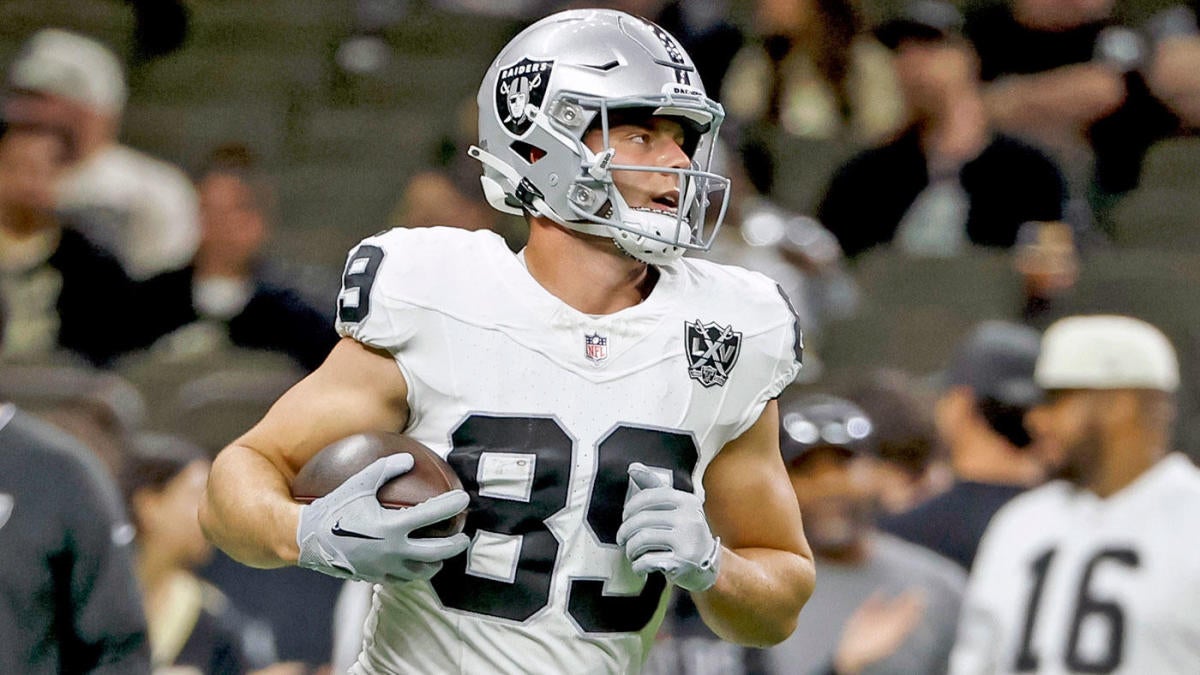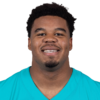Sports
2024 NFL All-Rookie Team: CBS Sports unveils league’s best first-year players

With just one week left in the regular season, we’re all thinking about end-of-season awards.
The MVP race has been top of mind. There are quite a few good Offensive Player of the Year candidates, even if we likely know which of them is going to win. The Defensive Player of the Year field is as wide open as any award has ever been heading into the final game of the year. There are so many good Coach of the Year candidates that it’s hard to even list them all.
The rookie awards are largely unsettled, even if we know the primary contenders. Those trophies will be handed out in a few months. What we’re handing out here are roster spots on our All-Rookie team. We’ll start with the offense and then flip to defense.
Offense
This quarterback class has exceeded extremely high expectations, even with No. 1 overall pick Caleb Williams not consistently reaching his peak form. Daniels has been the best of the bunch by a decent shout, achieving both consistency and explosiveness at a higher level than all the others. Daniels hasn’t just been the best rookie quarterback, but one of the small handful of best quarterbacks in the league. He’s tied for fifth in the NFL in EPA per dropback, according to Tru Media, and sixth in total passing value (adjusted net yards per attempt times dropbacks) behind only Joe Burrow, Lamar Jackson, Josh Allen, Baker Mayfield and Jared Goff. He’s likely going to run away with Offensive Rookie of the Year, and he’s going to deserve it.
It took Irving a while to take over the lead role in Tampa’s backfield, but he’s still working on a 1,000-yard rushing season and checking in 11th in success rate and fourth in yards per carry among the 42 running backs with 100 totes or more. And since the Buccaneers‘ bye, he’s been even better: He has 541 yards and three touchdowns on 92 carries, and has added 209 yards while catching all 19 of his targets. That’s an average of 135 total yards per game.
It also took Tracy a few weeks to take over the Giants backfield, but since Week 5, he’s on a 17-game pace of 1,064 rushing yards and 334 receiving yards — on a team that is a total dumpster fire. If New York can put an offensive line in front of him and get a viable quarterback, Tracy could be even better next year.
Nabers did all his work to date in just 14 games played, and he still became just the just the fifth rookie ever (including another one this season; more on him later) to record at least 100 catches and 1,000 receiving yards. The quarterbacks he caught passes from this season, by the way: Daniel Jones, Tommy DeVito, Drew Lock and Tim Boyle.
Speaking of outrageous production with less-than-ideal quarterback play, we have Nabers’ former LSU teammate right here. He’s been working with Mac Jones for much of the year, including his recent stretch run where he’s topped eight receptions and 86 yards in each of the last four games. The list of rookies with 80 catches, 1,000 yards and 10 touchdowns is now just three players long: Thomas, Ja’Marr Chase and Odell Beckham Jr.
McConkey has been Justin Herbert’s No. 1 target throughout the season, and he’s having quite the year himself — especially considering that L.A.’s has been a relatively low-volume passing offense. He’s not just your stereotypical slot receiver, either. He’s got elite speed (he ran the 40-yard dash in 4.39 seconds) in addition to the high-level route running and great hands.
Bowers is having the best season of all time for a rookie tight end. And arguably for any rookie pass catcher. The guy is practically unstoppable. He’s the one joining Nabers, plus Puka Nacua, Jaylen Waddle and Anquan Boldin, with 100 receptions and 1,000 yards as a rookie. All while working with Gardner Minshew, Aidan O’Connell and Desmond Ridder under center.
Alt has been as advertised, stepping into the lineup and immediately giving the Chargers strong play at right tackle. He’s been an excellent pass blocker, as expected, but has also come along and been good in the run game. Rosengarten, meanwhile, took a few games to step into the starting lineup; but once he did, Baltimore’s offensive line really came together and has helped drive arguably the NFL’s best offense.
Puni rather easily made the transition from tackle to guard, and was immediately one of the strongest links in San Francisco’s offensive line. He had issues at time with pass blocking (32 pressures allowed) but has been absolutely mowing defenders down in the run game all year long. JPJ has split his time almost equally between guard and center. (According to Pro Football Focus, he’s played 455 snaps at left guard, 421 at center and 29 at right guard.) A center in college and someone who was considered by many to be a center only in the NFL, he’s instead held his own while playing two positions.
This was a very good center draft class, and several of the players in it have had huge roles: Frazier, Powers-Johnson, Cooper Beebe, Beaux Limmer, Graham Barton and Tanor Bortolini have all been starters for at least half the season. Frazier’s work in middle of Pittsburgh’s line has probably been the best of them all, on balance.
Defense
Verse leads all rookies in pressures, and it’s not that close. Robinson is next on the list, and he’s TWENTY-TWO pressures behind. He’s fourth in total pressures, with only Myles Garrett, Jonathan Greenard and Trey Hendrickson ahead of him. His overall pressure rate of 16.7% is sixth in the NFL, via TruMedia, out of the 164 players who have rushed the passer 200 times or more. But he’s also not just been a pass rusher; he has 11 tackles for loss and his 34 run stops, per PFF, are more than twice as many as the next-closest rookie.
Robinson hasn’t played as many snaps as has Verse, but on a per-snap basis, he has arguably been just as good. His 17.2% pressure rate is actually a bit better than Verse’s, and ranks fourth among that aforementioned group of 164 players. Verse’s contributions as a run defender probably tip the scales in his direction when it comes to the Defensive Player of the Year voting.
If it weren’t for Verse, Fiske would be getting a lot more attention. And Fiske actually has more sacks than Verse despite the fact that he plays on the interior while Verse works off the edge more often. His 48 pressures are more than twice as many as the next-closest interior rookie (Sweat) and his 26 run stops are almost most among that group.
Sweat is second to Fiske in both pressures and run stops, but he’s probably been the better run defender. And that makes sense, considering he is an absolutely massive human at 6-4, 366 pounds. There were some questions about him coming into the league considering he was arrested on DUI chargers just weeks before the draft, but Sweat has made the Titans look smart for snagging him in the second round.
Oh look, it’s another Rams rookie. L.A. felt so strongly about Speights that it move on from a former captain in Ernest Jones IV before the season even started, and once Speights entered the lineup in the wake of Troy Reeder’s injury, he has rewarded their faith with some really solid play.
Green Bay has so desperately needed help on the second level of its defense for a while, and finally found a real keeper in Cooper. He’s had limited opportunities to rush the passer but has been unbelievably effective when asked to do so (four sacks and eight pressures on just 46 rushes), and he’s first among rookie linebackers in run stops. He’s occasionally been victimized in coverage by creative offenses, but that’s usually the last thing to come along for young off-ball linebackers.
The thing about Wilson is that everybody knew he was a really good player coming into the draft. He was incredible in college. He just had more injury red flags than almost any player in recent memory. The Steelers have gotten good use out of him in a rotational role, which might be how it has to be if they want to keep him relatively healthy over the next few years.
Philly’s rookie defensive backs have played an enormous role in one of the NFL’s best defenses. With DeJean in the slot and Mitchell on the outside, the Eagles have been incredibly tough to throw on for the significant majority of the year. They’re also both tough, physical players when asked to come down and help in the run game — DeJean in particular.
Lassiter struggled a bit early in the season, but came on and played like one of the league’s best cornerbacks after that. He and Derek Stingley Jr. now look like they’ll be a top-flight corner duo for years to come. He’s been targeted a lot and has therefore given up a bunch of touchdowns, but he’s made up for it with plays on the ball and limiting completions in general.
If I was going to debase myself and put two Florida State players on this team, then I had to at least make up for it by putting my guy from The U on here. That said, Kinchens clearly deserves it based on his play. His two-interception game against the Seahawks, including a pick six, was his announcement to the world that he’s a force in the secondary. While Verse and Fiske wreak havoc up front, he cleans things up on the back end. Considering that he led the ACC in interceptions as both a sophomore and junior at Miami, we probably should have seen this coming.
Williams’ partnership with Xavier McKinney on the back of Green Bay’s defense has been a significant part of that unit’s improvement this year. And his absence was felt in a big way against the Vikings this past weekend, as Minnesota destroyed the Packers with passes over the middle of the field.
















































